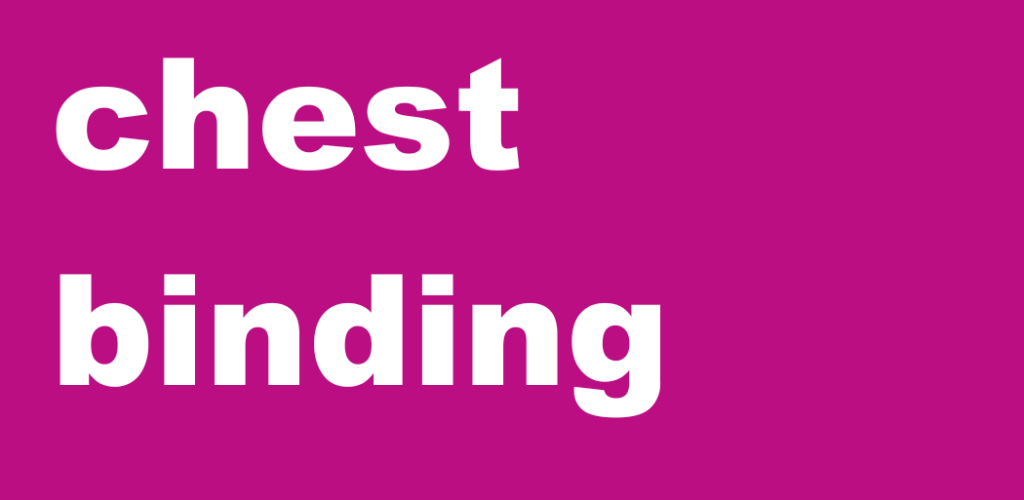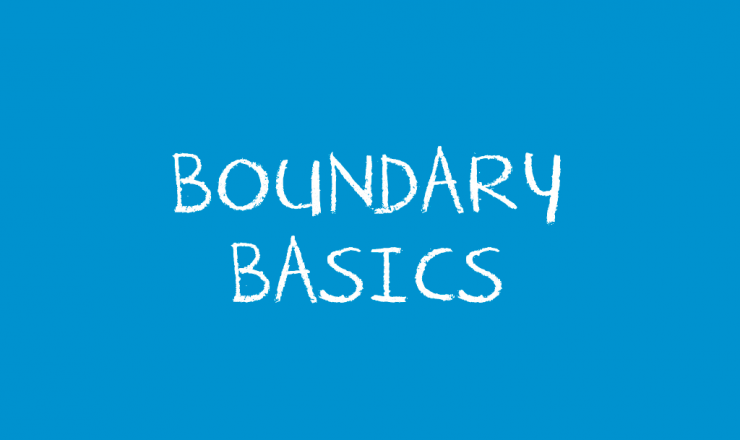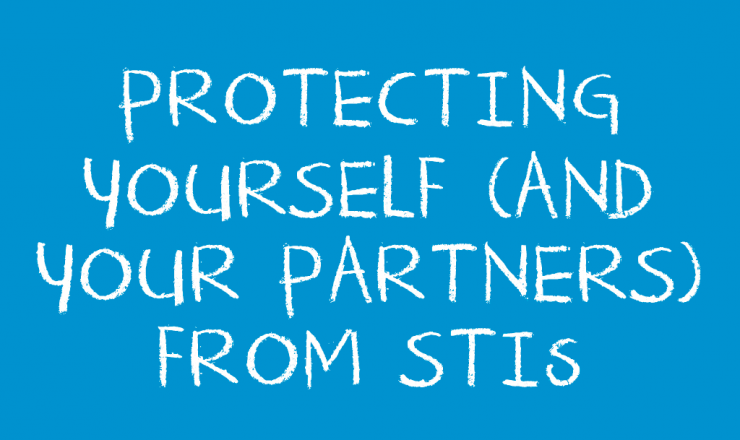Chest Binding
What is chest binding?
Chest-binding is the practice of using some type of constrictive material to flatten the chest. It’s most commonly a gender-affirming practice, but it’s done by all kinds of people for all kinds of reasons! Whether that’s to help with gender dysphoria, to help someone align their appearance more closely with their gender identity, or just for how it looks, the reasons for doing it can be totally different from person to person. No matter the reason, choosing to bind to nobody’s business but yours and who you choose to share it with. Your body, your choice!
Is it safe?
Binding when done correctly is safe, but you need to make sure you’re using the right size binder and only compressing your soft tissue to flatten it, but not cause damage. If it’s done incorrectly, you may risk skin irritation, discomfort, breathing issues, or back pain, but there are lots of ways to make sure you’re doing it safely and comfortably! Remember to take breaks if things are feeling irritating, and avoid wearing your binder to sleep.
Choosing the right size
Choosing the right size binder is one of the most important parts about binding safely. It’s best to do your own measurements, rather than guess based on your bra or t-shirt size. Being in between two sizes might make it a bit confusing, but it’s generally recommended rounding up to the larger size for a better chance of comfort.
How to measure your chest
For the underarm measurement, take your tape measure or string and wrap it around your back to the centre of your chest, think just below your armpits and just above the start of your chest tissue.
For the largest part of your chest, you’ll wrap the measuring tape around your whole torso trying to get where most of your chest tissue is, this will usually be around where your nipples are but does vary from person to person!
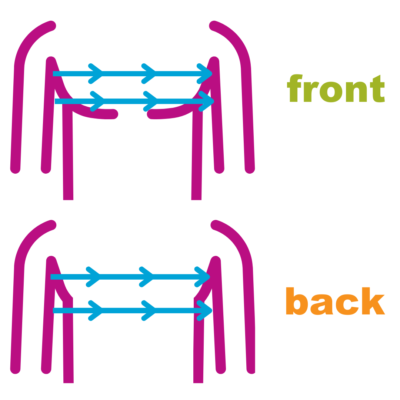
How to measure your shoulders
You won’t need to wrap the measuring tape all the way around your shoulders for this one, you’re just measuring from one point to the other. Try to keep the measuring tape or string as straight as you can, and do your best not to hunch or slouch so you can get an accurate measurement.
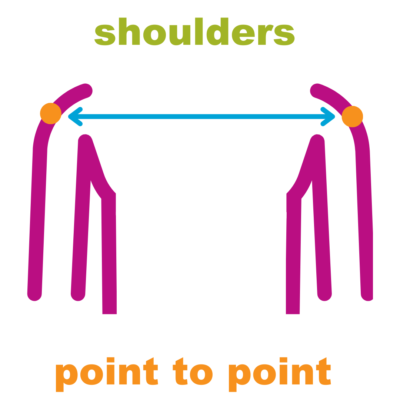
You’ll want to try and be relaxed too, to get the most natural measurement, but make sure it’s snug! When you’re looking at the measurement, try not to look down to see–instead measure while looking in a mirror so you’re not changing your posture. Remember: always round your measurements up if they fall between two measurements (so if you measure something like 38 ¼”, you’ll want to round up to 38 ½” or if you measure 38 ¾” round up to 39”).
Choosing a binder
Binders usually come in two styles: short or long.
Short binders end at your waist, which can be great for warmer weather or if you get hot easily. They do sometimes roll up, so if you want your waist to be shaped by a binder you may want to try a longer version. Long binders can go several inches below your waist, and while they also roll up you can use a belt to help keep it in place.
You might also want to think about what closures are most convenient for you: some binders use zippers, while others might use velcro or clasps. Think about what would be easiest and feel best for you before you start searching!
| FUN FACT |
|---|
| They also make binders for exercising! Sometimes called gym binders, these will be made of more breathable materials, often lower cut in the back to avoid extra sweating, and are made of stiffer materials that are less likely to slide around while you exercise. |
What if I have a bigger chest?
Knowing how to make your binder work with you shouldn’t be a fight, so it’s important to find ways to keep it comfortable and safe while still doing what it’s supposed to. Some people find that pushing their chest tissue closer to their armpits instead of letting the binder push it down can be helpful. It might also be a good idea to take more breaks, try to limit binding to 6 to 8 hours at a time. You can get creative with where you take those breaks, maybe during your lunch break or somewhere private, or skipping weekends if you’re not out and about. What’s most important is that you feel comfortable and safe, what makes you feel best comes first!
What if I have a smaller chest?
Some people with smaller chests end up choosing compression bras or sports bras as they are more widely available and tend to be cheaper alternatives to binders, but that doesn’t mean binders won’t work for you! Just make sure you’re measuring and sizing appropriately.
How to clean and care for your binder
Washing your binder regularly is a good habit to get into. This can be especially helpful for preventing skin irritation like itching or rashes. Most binders need a cold water wash on a delicate cycle if you’re using a machine, but follow the washing instructions that come with your binder for best results. For hand washing, you can use laundry detergent and some warm water–some folks call this the “forbidden binder soup” (we wouldn’t recommend drinking it either). However you wash it, it’s best to avoid putting it in the dryer–try hanging it up to dry on a hanger so it keeps its shape.
What if I don’t have access to a binder?
Binding may not always be an option for people, whether that’s due to cost being an issue, or personal health and safety, we know it can feel discouraging. You may feel tempted to use a DIY option like ace bandages, but that can be pretty dangerous. Bandages and other binding materials are used for constricting and restraining movement, and can actually limit your ability to breath, cut your skin, and even bruise or break your ribs! If binders aren’t available to you, try wearing a tight fitting shirt or tank top underneath a looser fitting t-shirt or button-up to make your chest appear flatter. Baggy clothes may seem like they’d work, but they can be less effective at hiding curves if they end up hanging off your chest and creating more shape. You might also want to try darker coloured clothes like black, brown, and navy. They do a good job at absorbing light and can make your chest look flatter and smoother.
Where can I get a binder?
You might have a hard time finding binders at big box department stores, or even sporting goods stores. Usually you’ll have better luck with shops that cater to trans folks seeking gender affirming clothing whether online or small businesses near you.
There are also some services that help provide free binders to folks who need them like BindersOUT for folks in Canada or Point of Pride for those in the US!
Further Reading
- A Binding Guide for All Genders and Gender Expressions – Trans Lifeline
- Binding: Resources & info about safer chest binding by Point of Pride
- Gender-Clinic-Chest-Binding-Handout.pdf (ohsu.edu)
If you have questions about this topic, feel free to contact one of our peer educators. [Link]
Last edited: December 2023.

